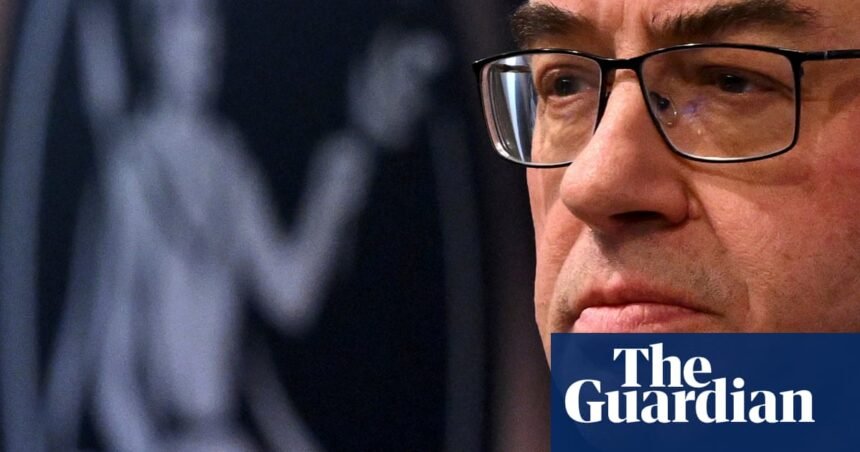The pound has fallen sharply after the governor of the Bank of England told the Guardian it could become a “bit more aggressive” in cutting interest rates if inflation continues to cool.
Andrew Bailey said he was encouraged that cost of living pressures had not been as persistent as feared, but warned the Bank was monitoring the Middle East crisis amid fears of an oil price shock.
In a wide-ranging interview, Bailey held out the prospect of Threadneedle Street becoming a “bit more aggressive” in cutting interest rates, provided the news on inflation continued to be good.
Sterling fell by 1.5¢ against the US dollar on international currency markets after the article was published on Thursday morning, to trade at about $1.31 – its lowest level in three weeks. The pound had already fallen by more than 1% over the week but analysts said Bailey’s Guardian interview had triggered a sharper decline.
Kathleen Brooks, a research director at XTB, said: “The market has used Bailey’s comments as a green light to price in more [interest rate cuts]. The pound has already sold off sharply this week, so further downside could be limited in the short term, however, Bailey has made it harder for the pound to recover.”
City investors expect the Bank to restart cutting interest rates at its next policy meeting in November, with financial markets moving after Bailey’s comments to fully price in a quarter-point cut to 4.75%.
The central bank cut interest rates in August for the first time since the Covid pandemic, with a reduction from 5.25% to 5%. Although it held borrowing costs unchanged in September, Bailey signalled readiness to resume interest cuts if inflation continued to cool.
Inflation currently stands at 2.2% – just above the Bank’s 2% target. However, Bailey said if news on the pace of price rises continued to be good the central bank could become “a bit more activist” in its approach to cutting interest rates.
However, investors fear escalating tensions in the Middle East threaten to drive oil prices back up towards $100 a barrel in the event of a spiralling conflict involving Israel and Iran – a development that could reignite inflationary pressures.
Bailey was speaking from his office in Threadneedle Street after this week’s Israeli invasion of southern Lebanon and Iran’s launch of ballistic missiles in response. Oil prices rose by 3% amid concerns that a deepening conflict might disrupt supplies of crude from the Middle East.
after newsletter promotion
“Geopolitical concerns are very serious,” Bailey said. “It’s tragic what’s going on. There are obviously stresses and the real issue then is how they might interact with some still quite stretched markets in places.”
Bailey pointed out that in the year since Hamas’s 7 October attack on Israel there had not been a big rise in oil prices of the sort seen in the past. “From the point of view of monetary policy, it’s a big help we haven’t had to deal with a big increase in the oil price. But obviously we’ve had that experience in the past, and in the 1970s, the oil price was a big part of the story.
“Obviously, we keep watching it. We watch it extremely closely to see the impact of the latest news. But … my sense from all the conversations I have with counterparts in the region, is that there is, for the moment, a strong commitment to keep the market stable.
“There’s also recognition there’s a point beyond which that control could break down if things got really bad. You have to continuously watch this thing, because it could go wrong.”
















